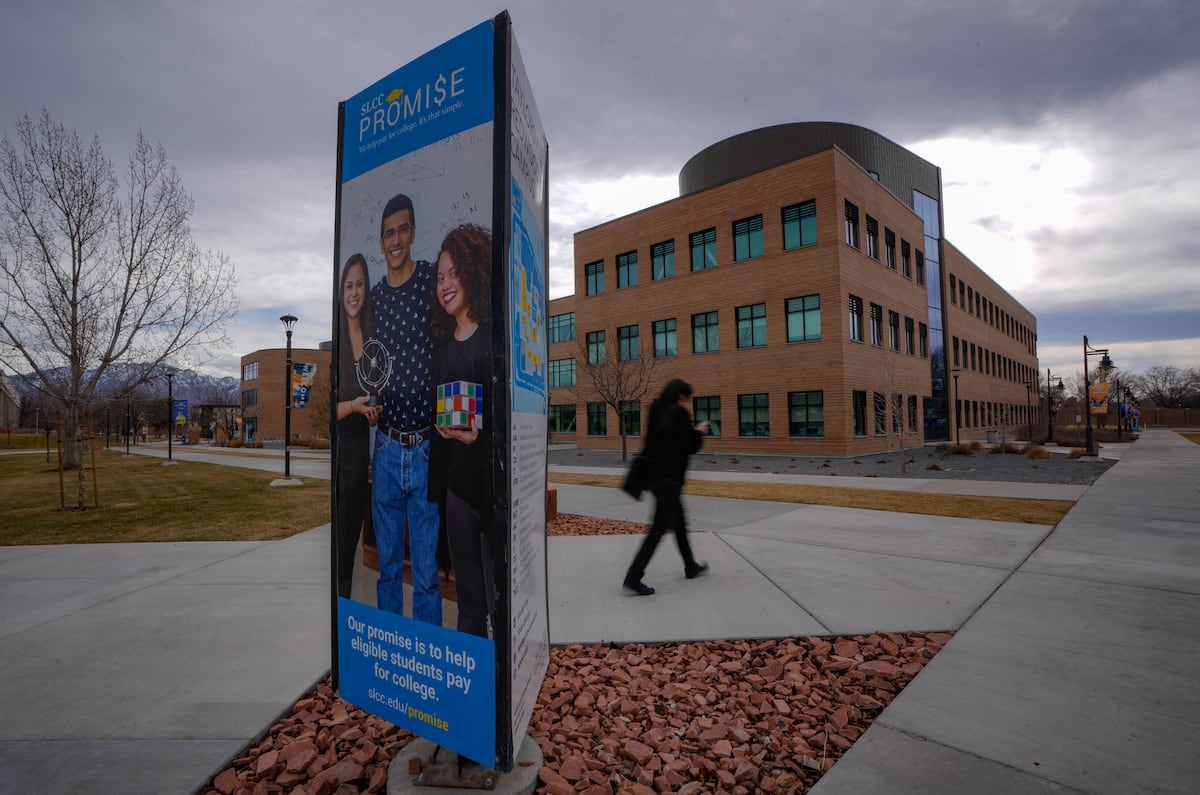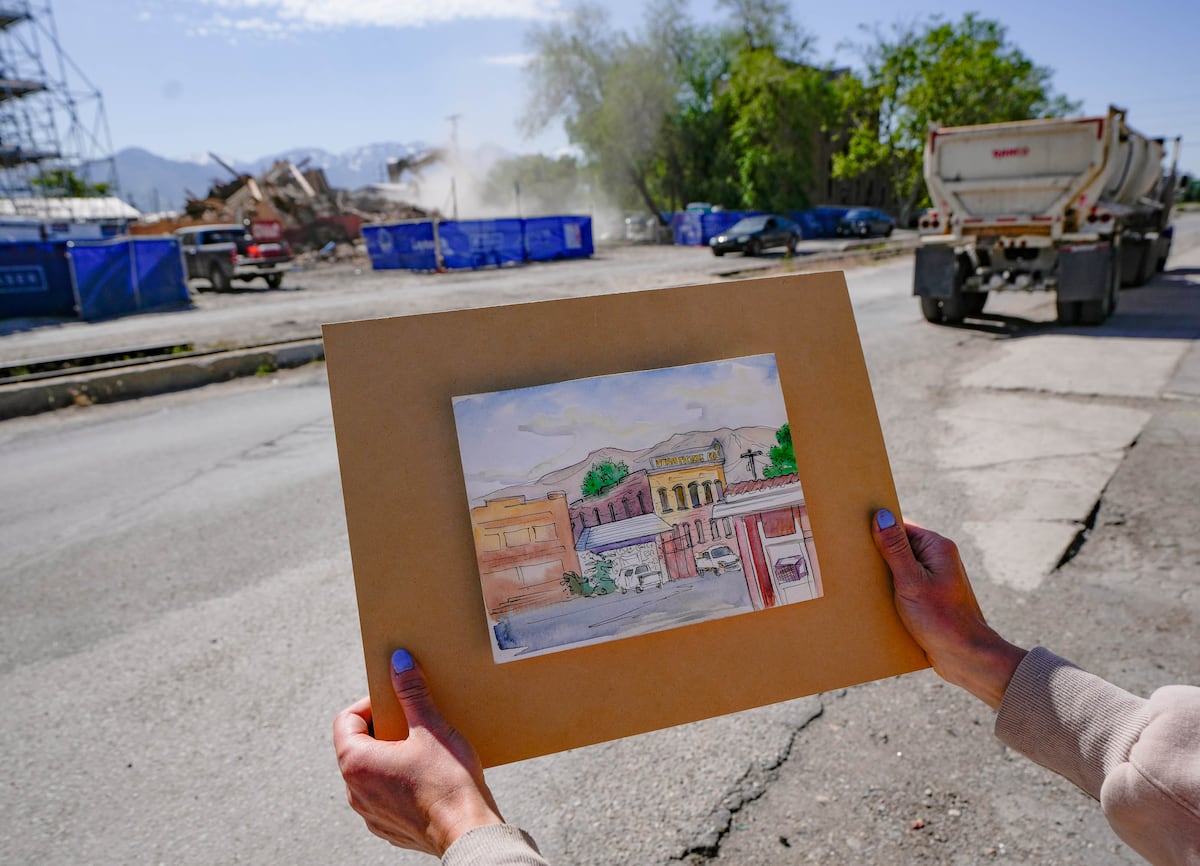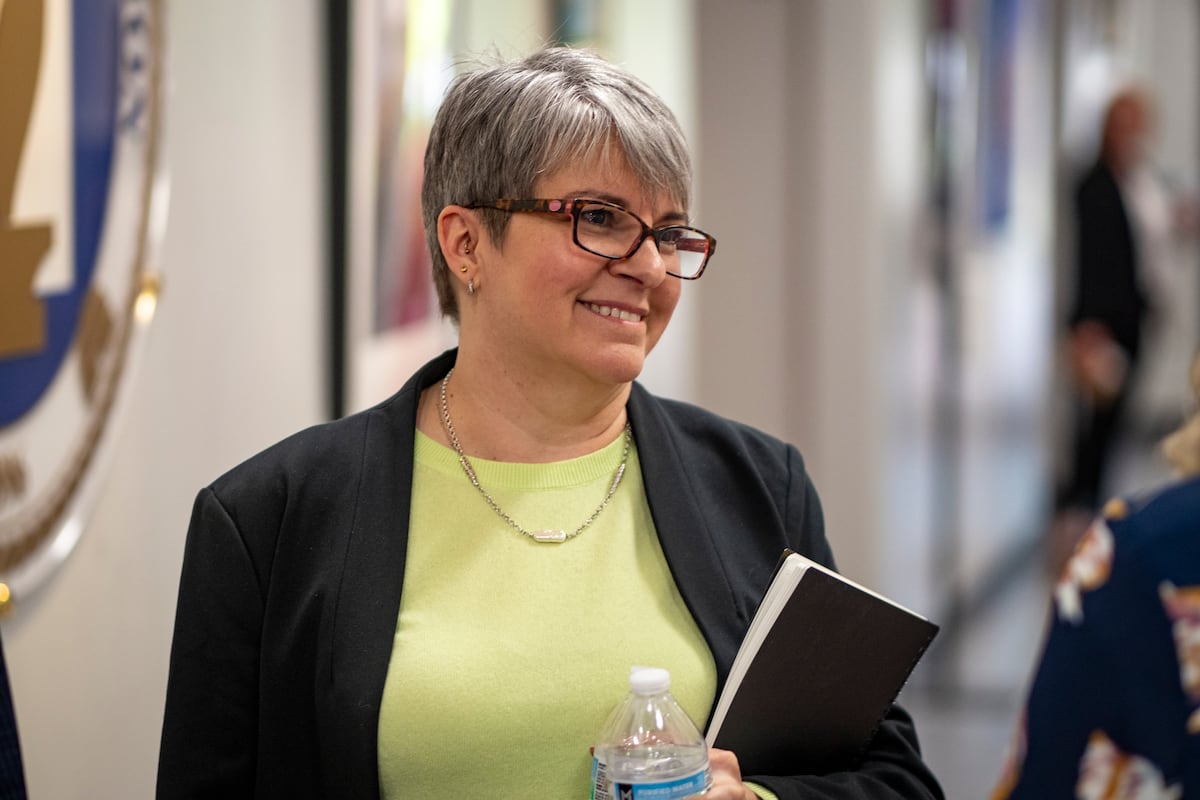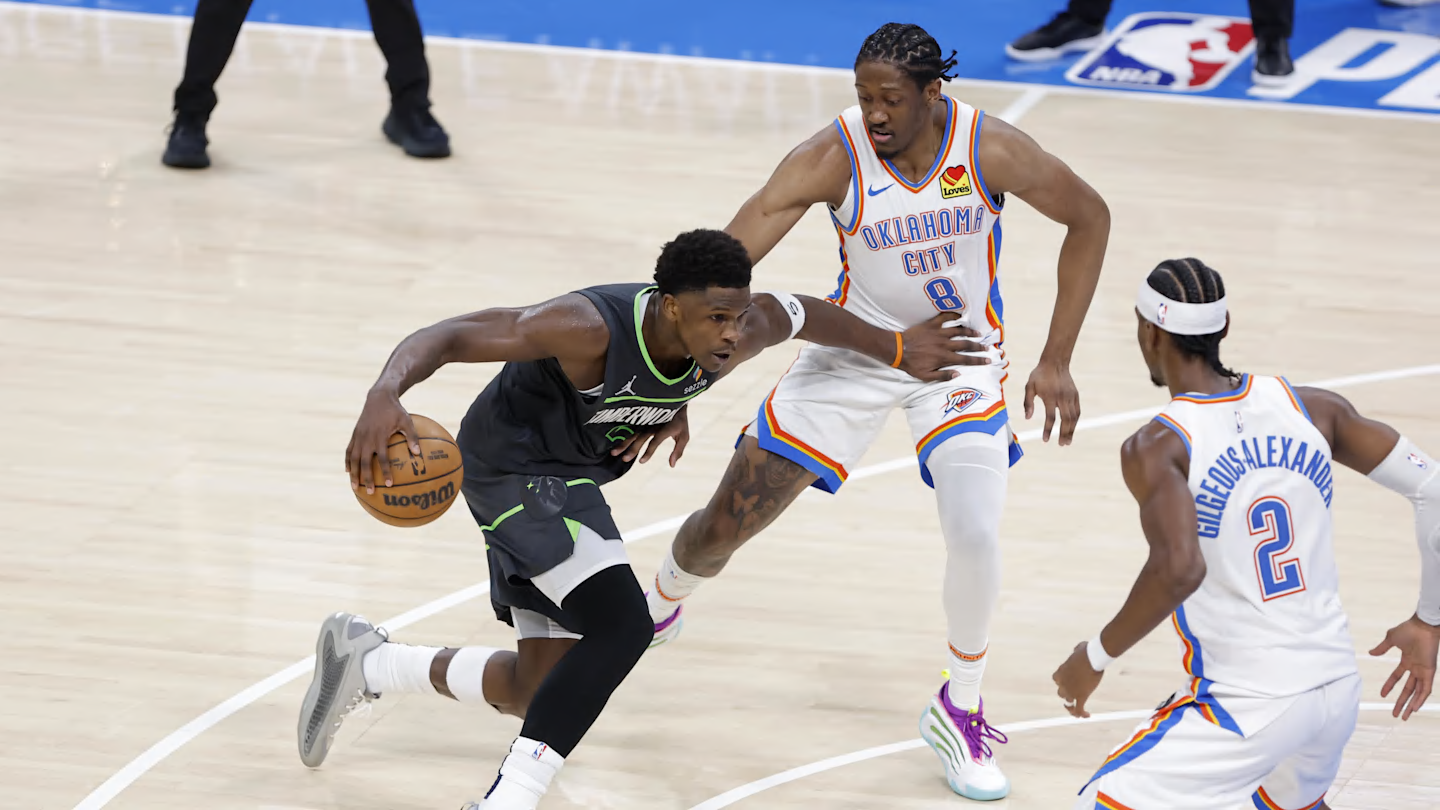Toronto Maple Leafs Mitch Marner speaks to media during an end-of-season availability in Toronto, on Monday, May 15, 2023. The Maple Leafs were eliminated from the NHL playoffs by the Florida Panthers …

Jerseys and some stray beer cans darted down from the crowd and onto the ice at Scotiabank Arena.
The Toronto Maple Leafs trailed the Florida Panthers 6-1 in the third period of Game 7 at home. A second-round series they once held a 2-0 lead in got abruptly turned on the Leafs at the will of the defending Stanley Cup champions.
Fans were not shy about showing their disappointment. Boos accompanied the items tossed toward the lackluster action. Sunday marked the seventh consecutive Game-7 loss for Toronto; the team has not made it past the conference semi-finals since 2002.
Amid the unrest, Mitch Marner sat with his head between his legs on the Toronto bench.
Marner’s ninth season with the Maple Leafs failed to have a different ending.
“It’s never easy,” the forward said during his team’s exit interviews. “There’s no words to really put to it. It’s hard. It gets harder.”
It might have been Marner’s final time donning the Toronto jersey, too. The 28-year-old will be an unrestricted free agent come July 1 at noon ET, and signs point to a separation between Marner and the team that drafted him fourth overall in 2015.
Marner is coming off a six-year, $65.4 million contract with a cap hit of $10.9 million per season. With the salary cap projected to increase from this season’s $88 million to $95.5 million for 2025-26, it is expected that Marner will test the market for a deal worth $13 million per year. It would put him just behind Auston Matthews for the highest AAV in the league.
The Utah Mammoth have around $22.31 million of cap space this summer, and they need a high-caliber, top-six scoring forward.
Could Marner land in Salt Lake City? It is not out of the realm of possibility.
“I’ve always loved my time here. I’ve loved being here,” Marner said, in the past tense, of Toronto. “I haven’t processed anything yet. Still so fresh. Losing sucks.”
“It’s so fresh that it’s tough to really think about anything right now about going forward and future-wise. … Next coming weeks, I’ll sit down with my wife and we‘ll start talking and trying to figure out what the next steps are.”
Toronto Maple Leafs Mitch Marner speaks to media during an end-of-season availability in Toronto, on Monday, May 15, 2023. The Maple Leafs were eliminated from the NHL playoffs by the Florida Panthers on Friday. (Nathan Denette/The Canadian Press via AP)
Marner is hitting the open market at his prime. He had 102 points (27 goals, 75 assists) in 81 regular-season games while being one of Toronto’s best defensive forwards. He will likely get calls from the whole league. It is not often that someone of his talent is available. Success in hockey comes from more than one player; Marner, though, could change the complexion of a franchise.
In his cumulative time with Toronto, Marner logged the fifth-most points in Leaf history and the fourth-most assists. It was the postseason, though, that has stained his and the core four’s legacy. During this playoff run, Marner had 13 points (two goals, 11 assists) in 13 games. He had five points in seven games against the Panthers — only one goal and zero contributions in Game 7.
Could it be the external pressure? Florida’s Matthew Tkachuk gave his take following his team’s series win.
“Sometimes you feel bad for them because they have some unbelievable players and a great team. I was actually saying this last night to some of the guys — if their team was not in Toronto dealing with all the crazy circus stuff outside of it, they would be an unbelievable team,” Tkachuk said on the Spittin Chiclets podcast. “They just have so much to deal with, and I feel bad. We don’t have to deal with that in Florida. I think that’s what makes me and my team so lucky. You almost use that against them — the pressure that these guys have to deal with day in and day out.”
Florida Panthers’ Matthew Tkachuk speaks during the NHL hockey team’s media day, Wednesday, Sept. 20, 2023, in Sunrise, Fla. (AP Photo/Marta Lavandier)
Marner said “there’s pressure everywhere,” but it is no secret that playing the Canadian NHL markets comes with a greater level of scrutiny.
Utah could quiet things down for Marner. A smaller-market team, a fan base that has yet to ever turn on its players and an upward trajectory for success — and hopes for a championship — in the ensuing years as the Mammoth exit the rebuild.
It would be a lot of money to spend for a long term — likely seven years — all tied up in one person. It would be a lot of trust in one guy to become an immediate leader and difference maker. Whether those risks — and salary-cap adjustments — are worth it will be up to general manager Bill Armstrong.
“Ryan [Smith] is definitely, and the ownership group, is capable of making sure that we can pretty much get anything done in the league that we need to get done. But it doesn’t mean that you spend unwisely,” Armstrong said of his team’s approach to the offseason. “Not to say that if there’s a player there that makes sense, that addresses our needs — we‘re going to go after that player.”
If the Mammoth do not win the Marner sweepstakes — or choose not to participate — here are some other unrestricted free agents they could look to target.
(Rick Egan | The Salt Lake Tribune) Utah Hockey Club General Manager Bill Armstrong answers questions during media day at the Delta Center, on Wednesday, Sept. 18, 2024.
Nikolaj Ehlers is a left wing on the Winnipeg Jets who is coming off a seven-year, $42 million contract. The 29-year-old had 63 points (24 goals, 39 assists) in 69 regular-season games. Ehlers’ consistency is a strength — he has had 20-plus goal seasons for eight of his 10 years in the NHL. He was a top-six stalwart for the Jets, who was third in points on the team. Ehlers is a finisher, something Utah was missing at times in its inaugural campaign.
The Vancouver Canucks’ Brock Boeser could bring some size and scoring touch, too. The 28-year-old right winger had 50 points (25 goals, 25 assists) in 75 games and stands at 6-foot-1, 208 pounds. Of note, Boeser’s agent Ben Hankinson also represents Nick Bjugstad (who raved about Utah). Boeser’s last contract was three years, $19.95 million with a $6.650 million AAV. This summer is his time to get paid.
“It weighs on me a lot. All I want to do is win,” Boeser said during Vancouver’s exit interviews after it missed the playoffs. “I definitely think that’s going to play a big part — if I do make it [to free agency] — in my decision.”
Vancouver Canucks’ Brock Boeser waits for a faceoff during the third period of an NHL hockey game against the Anaheim Ducks in Vancouver, on Tuesday, Nov. 28, 2023. (Darryl Dyck/The Canadian Press via AP)
Sam Bennett (Florida Panthers) and Ryan Donato (Chicago Blackhawks) offer two different looks at center. Bennett, 28, has been a key piece to a Stanley Cup-winning team in Florida. He plays with an edge and had 51 points (25 goals, 26 assists) in 76 games. Bennett’s last contract was four years, $17 million. Donato has been a bright spot on the mightily struggling Blackhawks. The 29-year-old posted 62 points (31 goals, 31 assists) in 80 games and just finished his two-year, $4 million deal. No doubt a cheaper option.
Armstrong was also not hesitant to bring in some older guys last offseason. The balance between the veterans (like Ian Cole, Kevin Stenlund, Olli Määttä, Sergachev) and the young talent (Logan Cooley, Dylan Guenther, Clayton Keller) was one of the Mammoth’s greatest strengths. So, Utah could look to age up through free agency, too.
John Tavares (34), Brock Nelson (33) and Matt Duchene (34) are all experienced centers on the market. Tavares had 74 points (38 goals, 36 assists) in 75 games with Toronto and is closing his seven-year, $77 million contract. Nelson — who was traded from the New York Islanders to the Avalanche at the deadline — had 56 points (26 goals, 30 assists) in 80 games. His last contract was six years, $36 million. Duchene had 82 points (30 goals, 52 assists) in 82 games for the Dallas Stars and was on a one-year, $3 million deal.
There are many directions Utah could go with free agency. Armstrong is taking a balanced approach, though, and thinking big picture instead of making a headlining splash just because his team has the means now.
Source: Utah News














